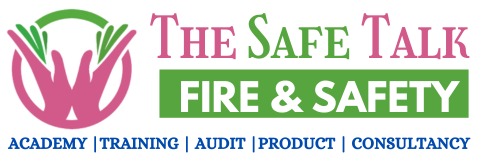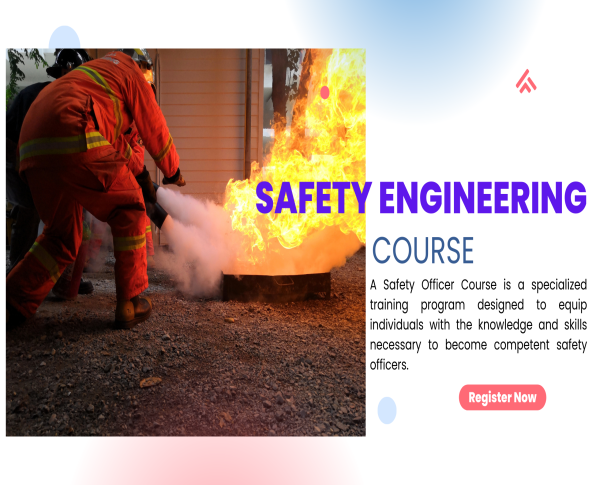The Ultimate Guide to Safety Officer Course: Everything You Need to Know
In any workplace, safety is paramount. Ensuring a safe working environment not only protects employees from harm but also contributes to increased productivity and reduced downtime. This is where safety officers play a crucial role. A safety officer is responsible for implementing safety regulations, conducting inspections, and training employees to prevent accidents and injuries. If you're considering a career in occupational health and safety, enrolling in a Safety Officer Course is your first step towards success. In this comprehensive guide, we'll delve into everything you need to know about becoming a safety officer, from the importance of the role to the specifics of the training.
What is a Safety Officer Course?
A Safety Officer Course is a specialized training program designed to equip individuals with the knowledge and skills necessary to become competent safety officers. These courses cover a wide range of topics related to occupational health and safety, including hazard identification, risk assessment, emergency response, and regulatory compliance. Whether you're looking to enter the field or enhance your existing skills, a Safety Officer Course provides the foundational knowledge required to excel in this critical role.
Importance of Safety Officers
Safety officers play a vital role in promoting workplace safety and preventing accidents. By conducting regular inspections, identifying hazards, and implementing safety protocols, they help minimize the risk of injuries and ensure compliance with regulatory standards. Beyond safeguarding employees, safety officers also protect organizations from costly fines, lawsuits, and reputational damage that can result from safety violations. In essence, safety officers are integral to creating a culture of safety within an organization and fostering a conducive work environment for all.
Key Responsibilities of Safety Officers
Safety officers have diverse responsibilities aimed at mitigating risks and ensuring a safe workplace environment. Some of the key responsibilities include:
1. Conducting Risk Assessments: Safety officers assess workplace hazards and evaluate potential risks to employees' health and safety. This involves identifying potential sources of danger, such as machinery, chemicals, or ergonomic factors, and implementing controls to minimize the risk of accidents.
2. Developing Safety Policies and Procedures: Safety officers develop and implement safety policies and procedures tailored to the specific needs of the organization. These policies outline safety guidelines, emergency procedures, and protocols for reporting incidents or hazards.
3. Providing Safety Training: Safety officers conduct safety training sessions for employees to educate them about potential hazards, safe work practices, and emergency procedures. This training may cover topics such as fire safety, first aid, ergonomics, and personal protective equipment (PPE).
4. Conducting Inspections: Safety officers perform regular inspections of the workplace to identify potential hazards and ensure compliance with safety regulations. They inspect equipment, machinery, facilities, and work practices to identify areas for improvement and ensure adherence to safety standards.
5. Investigating Incidents: In the event of an accident or near-miss incident, safety officers conduct thorough investigations to determine the root cause and implement corrective actions to prevent recurrence. This may involve interviewing witnesses, analyzing data, and documenting findings.
6. Liaising with Regulatory Agencies: Safety officers serve as liaisons between the organization and regulatory agencies responsible for occupational health and safety. They ensure compliance with relevant laws, regulations, and standards, and assist with inspections and audits as needed.
7. Promoting Safety Culture: Safety officers promote a culture of safety within the organization by raising awareness, encouraging participation in safety initiatives, and recognizing employees for their contributions to safety.
Overall, safety officers play a multifaceted role in protecting employees, reducing risks, and ensuring regulatory compliance within the workplace.
Types of Safety Officer Courses
Safety Officer Courses vary in scope and duration, catering to individuals with different levels of experience and expertise. Some common types of Safety Officer Courses include:
1. Basic Safety Officer Course: Designed for beginners or entry-level professionals, basic safety officer courses provide foundational knowledge of occupational health and safety principles, regulations, and best practices. These courses typically cover topics such as hazard identification, risk assessment, safety management systems, and emergency response procedures.
2. Advanced Safety Officer Course: Geared towards experienced safety professionals or those seeking to advance their careers, advanced safety officer courses delve deeper into specialized topics such as industrial hygiene, safety engineering, environmental management, and legal aspects of occupational safety. These courses equip participants with advanced skills and strategies to address complex safety challenges in various industries.
3. Industry-Specific Safety Courses: Some Safety Officer Courses are tailored to specific industries or sectors, such as construction, manufacturing, healthcare, oil and gas, or transportation. These courses focus on the unique hazards and regulatory requirements associated with each industry, providing targeted training to address industry-specific safety concerns.
4. Certification Programs: Many Safety Officer Courses offer certification upon completion, demonstrating proficiency in occupational health and safety. Common certifications include Certified Safety Professional (CSP), Occupational Health and Safety Technician (OHST), and Construction Health and Safety Technician (CHST). These certifications enhance credibility and career prospects for safety professionals.
Choosing the Right Safety Officer Course
When selecting a Safety Officer Course, it's essential to consider several factors to ensure it meets your specific needs and goals. Here are some key factors to consider:
1. Accreditation: Choose a course accredited by reputable organizations or accrediting bodies, such as the Occupational Safety and Health Administration (OSHA), National Institute for Occupational Safety and Health (NIOSH), or relevant industry associations. Accredited courses adhere to recognized standards of quality and provide assurance of their educational value.
2. Curriculum: Review the course curriculum to ensure it covers essential topics relevant to your career objectives and industry requirements. Look for courses that include comprehensive instruction, hands-on training, case studies, and practical exercises to enhance learning outcomes.
3. Instructor Qualifications: Evaluate the qualifications and expertise of the course instructors to ensure they possess relevant industry experience, certifications, and teaching credentials. Experienced instructors can provide valuable insights, practical guidance, and real-world examples to enrich the learning experience.
4. Training Delivery: Consider the format and delivery method of the course, whether it's offered in-person, online, or through a blended learning approach. Choose a training format that aligns with your schedule, learning preferences, and accessibility requirements.
5. Reviews and Recommendations: Seek feedback from past participants, industry professionals, or colleagues who have completed the course to gauge its effectiveness, relevance, and overall satisfaction. Reading reviews and testimonials can help you make an informed decision about the course quality and suitability.
6. Cost and Value: Evaluate the cost of the course in relation to the value it provides in terms of knowledge acquisition, skills development, and career advancement opportunities. Compare tuition fees, course duration, and additional benefits such as certification, course materials, and support services to determine the overall value proposition.
By carefully considering these factors, you can select a Safety Officer Course that aligns with your career aspirations and equips you with the necessary tools and expertise to succeed in the field of occupational health and safety.
Conclusion
Becoming a safety officer requires dedication, specialized training, and a commitment to promoting workplace safety and protecting employees from harm. A Safety Officer Course serves as the gateway to a rewarding career in occupational health and safety, providing the knowledge, skills, and credentials needed to excel in this critical role. Whether you're just starting your journey or seeking to advance your existing skills, investing in quality safety training is essential for personal growth and professional success. By choosing the right Safety Officer Course and embracing the principles of safety leadership, you can make a positive impact on workplace safety, contribute to organizational success, and ensure a brighter, safer future for all.
Remember, safety is not just a priority—it's a core
FAQs:
-
What is the primary goal of fire safety and prevention training?
- The primary goal is to educate individuals on fire hazards, prevention strategies, and emergency response procedures to minimize risks and ensure safety.
-
Who should undergo fire safety and prevention training?
- Anyone who resides, works, or operates in environments where fire hazards exist, including homeowners, employees, business owners, and safety professionals.
-
How often should fire drills be conducted in workplaces?
- Fire drills should be conducted regularly, typically at least once every six months or as required by local regulations, to ensure familiarity with evacuation procedures and assess emergency preparedness.



